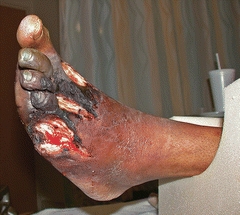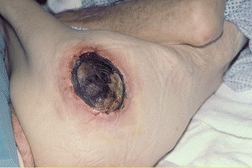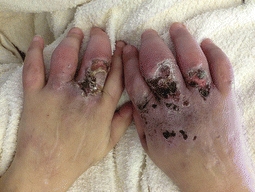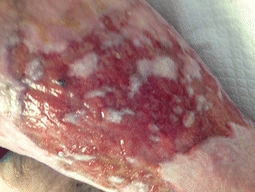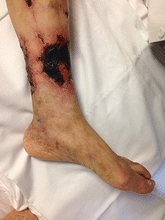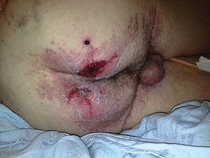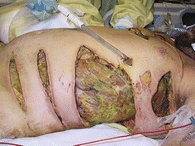Elizabeth A. Ayello, PhD, RN, ACNS-BC, CWON, MAPWCA, FAAN
1. What is the most likely diagnosis of this recently debrided ulcer on the plantar surface of the foot?
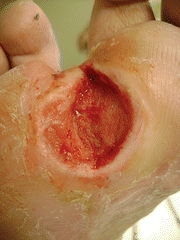
A. Pressure ulcer
B. Arterial ulcer
C. Diabetic ulcer
D. Venous ulcer
2. Using the International Skin Tear Advisory Panel (ISTAP) classification system, what type of skin tear is seen here on the upper extremity?
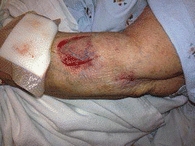
A. Type I
B. Type 2
C. Type 3
D. Type 4
A. Arterial disease
B. Venous disease
C. Necrotizing fasciitis
D. Pyoderma gangrenosum
4. During a skin assessment, you discover the brownish-purplish dry area on the upper extremities; you suspect that this is:
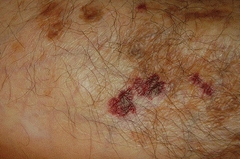
A. melanoma.
B. pyoderma.
C. basal cell carcinoma.
D. senile purpura.
A. stage I.
B. stage III.
C. unstageable.
D. SDTI.
A. Frostbite
B. Eczema
C. Drug injection injury
D. Necrotizing fasciitis
A. Biofilm
B. Granulation island buds
C. Slough
D. Eschar
A. Pressure
B. Renal failure
C. Sickle cell disease
D. Ischemia
A. Lymphedema with fibrosis
B. Lipedema
C. Melanoma
D. Scleroderma
A. Pressure ulcer
B. Skin tear
C. Gluteal cleft injury
D. Moisture-associated skin damage
11. This patient presents with ulcerative lesions and provides a history of working as an itinerant field laborer. What is the most likely diagnosis?
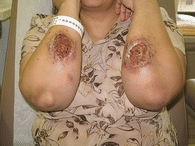
A. Buruli ulcer
B. Blastomycosis
C. Montezuma ulcer
D. Traumatic abrasions
A. gas gangrene.
B. infected postsurgical wound.
C. necrotizing cellulitis.
D. necrotizing fasciitis.
13. Despite the clinical findings that suggest carcinoma, tissue biopsy is indicated to establish a definitive diagnosis. Based on histopathology, which location would be the best choice to perform tissue biopsy?
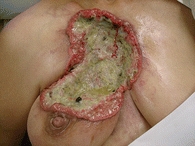
A. Site 1
B. Site 2
C. Site 3
D. Site 4
Stay updated, free articles. Join our Telegram channel

Full access? Get Clinical Tree



